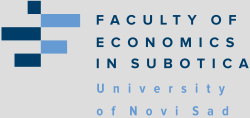The Smart Cities Concept as One of the Priorities of the Slovak Republic
DOI:
https://doi.org/10.46541/978-86-7233-406-7_216Keywords:
Smart Cities Concept, non-financial, annual report, corporate social responsibility, smart city.Abstract
At present, the development of the urban way of life requires the application of city policy management with an emphasis on sustainable development, and it can be said that individual states strive to integrate "smart" elements into the activities of cities in conditions of sustainable development. The concept of Smart Cities in line with the ideas of sustainable development can provide new necessary impulses when integrating into the city management strategy, leading to the creation of a smart city that meets the needs of the population while preserving natural resources for future generations. The importance of this topic lies in the growing interest in applying the concept of Smart Cities as a starting point for further development of cities and regions and their transformation into smart cities and regions in the Slovak Republic, which is one of Slovakia's priorities in preparing a partnership agreement for the new programming period 2021 – 2027. Providing intelligent services to a city or region is not possible without informing the population. The annual report is one of the sources that provides information on the application of the Smart City concept to a wide range of information users, and thus to the general public. The aim of this paper is to analyse the Smart City Concept in terms of sustainable development with focus on innovation and reporting smart information that meets the definition of non-financial information in the annual report in the Slovak Republic.



